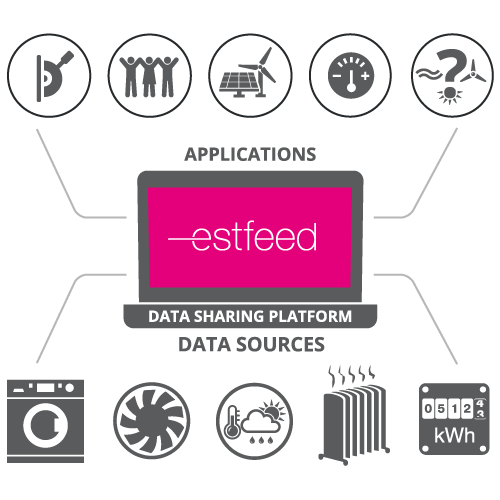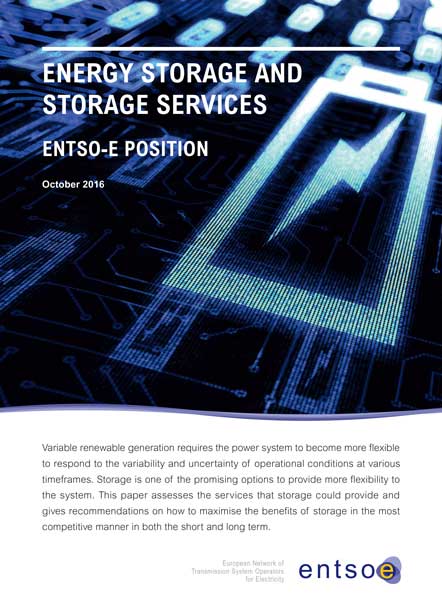In the last decade, the European power system has gone through important changes resulting from successful European energy, climate, and environmental policies as well as digitalisation and technological progress. The role of consumers in electricity markets is growing, as they take on the role of producer-consumer (‘prosumer’) and as they engage in demand response. This, along with developments such as the increasing amount of renewable energy sources, calls for a revision of the interaction between transmission and distribution and, beyond, for a new market design.
Towards More Synergies Between Wholesale and Retail Markets
When striving for an integrated European electricity market allowing enhanced exchanges between countries and an optimal use of resources, it is necessary to work on a smarter interface between the wholesale and retail markets. Variable distributed generation and base load centralised generation must complement each other to meet a fluctuant demand, targeting cleaner and cheaper energy across Europe.
In an integrated electricity market, flexibility, coming from consumption or generation, is necessary to enhance the development of new services and support an efficient use of energy sources and a secure operation of the system at both distribution and transmission levels. For this purpose, data is becoming a key asset that should be extensively and speedily exchanged, while ensuring security and confidentiality for the consumers. This is the basis for a smarter grid.
To meet these challenges, TSOs and DSOs cooperate closely to build the rules of the game for today and tomorrow. This is, of course, not a sole TSO-DSO business and requires dialogue with customers, electricity retailers, smart grid technology providers, data hubs, etc. The first objective of the TSO-DSO work is to build a common understanding of the challenges and needs from the perspectives of a system operator and neutral market facilitator and to share it more widely with the market parties, regulators, and European Commission.
Energy storage and storage services
Storage is one of the promising options to provide more flexibility to the system.
ENTSO-E published in October 2016 a position paper on storage and storage services, assessing the services that storage could provide and proposing general principles that should guide the future policy and investments framework for storage to be taken up at European level.
TSO-DSO Cooperation: How and Which Priorities?
Based on the memorandum of understanding signed in 2015 between the four DSO associations (EDSO for Smart Grids, CEDEC, EURELECTRIC, and GEODE) and ENTSO-E and the creation of a TSO-DSO platform supervised by the European Commission, TSOs and DSOs have intensified their work together in 2016. They delivered a common report on data management, outlining needs, roles, and responsibilities in data exchanges. Further work is being carried out on more concrete models for data management: which kind of data needs to be exchanged? For which business processes? How to deliver it in the best way to consumers, market players, and new service providers? A second area of collaboration addresses active power management. Distributed generation and customer participation through demand-side response create a wide potential of new services for the grid and the system, called ‘distributed flexibilities’.
These flexibilities will be key to managing the electrical system in the best possible way and to developing new products on the market (such as aggregator activities). Rules of the game are needed to ensure a fair and efficient market, to avoid the multiplication of non-coordinated local marketplaces, and to get the most out of these services. The TSOs and DSOs work together on this issue to understand their respective challenges and work towards an integrated market. One of the core issues is the interaction between balancing the electrical system, managing congestion on the grid, and tackling both global and local issues at the same time. The TSOs and DSOs plan to work on voltage control, storage, and network planning as further steps.
Empowering customers: TSO Case Study
Elering/Estonia – Estfeed, the Smart Energy System Platform
Estfeed is a data sharing platform that allows network companies, energy producers, and consumers to interact more efficiently and make the data collected during energy consumption understandable and usable for end users. The objective of the Estfeed project is to create a smart grid that allows market players to obtain energy consumption information securely and transparently, to understand the needs related to the metering point, and to change their behaviour accordingly. The Estfeed platform and applications turn the data into valuable information for consumers, energy producers, network companies, and other participants in the energy market.
Estfeed brings together data sources and applications. Data sources range from electricity, gas, and district heating smart meter readings to weather forecasts and energy day-ahead prices. It can also be consumption information from individual devices in industry, offices, and households.
Estfeed is a portal that gives developers a chance to access this information flow. By interpreting and combining data, they can create useful applications for themselves or their customers (end consumers). The aim of the applications is to create efficiency, either for cost optimisation or for end consumers.

Estfeed is an integrated part of the Estonian public information exchange platform called X-Road. This means the highest security standards. The X-Road enables access to all kinds of public data sources, which may be of relevance for the developers of Estfeed applications.
The Estonian electricity and gas TSO, Elering, as a neutral party, is well placed to provide this data sharing service to the public in a reliable and independent way. The growing importance of information and communication technologies is becoming central in running the energy system. It transforms the role of the TSO; Elering is the smart energy system operator and Estfeed is the tool for realising the smart grid.
Empowering customers: TSO Case Study
Eirgrid/Ireland – Power Off & Save
Launched in June 2016, Power Off & Save, developed by EirGrid in partnership with Electric Ireland, is a pilot project in demand-side management (DSM), empowering and rewarding residential customers to reduce their energy use when electricity demand is high. The integration of DSM is an important component of Ireland and the EU’s transition towards a low carbon economy. The DSM is expected to feature as a key part of the energy system on the road to 2030, and the Irish government has also recognised its potential and is committed to exploring opportunities in the sector. The growth of DSM in Ireland is undergoing rapid change; however, this recent growth has focused on commercial and industrial loads only. Given the scale of residential demand in Ireland, EirGrid was keen to engage residential customers and harness their power to contribute to a stable electricity system through a project such as Power Off & Save.
The project has already engaged almost 1,000 residential customers. Those participating have been asked via SMS text message directly to their mobile phones or via a notification to their smartphone to switch off appliances for approximately 30 minutes. These ‘demand events’ will take place on 10 occasions, over the 18-month project duration. Those who participate in the scheme will be rewarded with up to €100 off their electricity bill.
residential customers
To date there have been two Power Off & Save ‘demand events’, and as a result behaviour patterns and learning can only be inferred; however, preliminary effects have been identified:
- Independent control is of value to participants. The enhanced agency offered by the smart energy controllers (SEC) installed for the project provides a real benefit to the customer in terms of control and comfort.
- Response rates have been high. A minimum of 70% of project participants responded to the notification and reduced their load; however, both ‘demand events’ took place in the evening (after 6 pm).
- Participant reaction times can vary. Approximately 40% of participants reacted within the first five minutes of receiving the notification. Response times vary in accordance with the technology deployed in the home.
Download the full annual report



